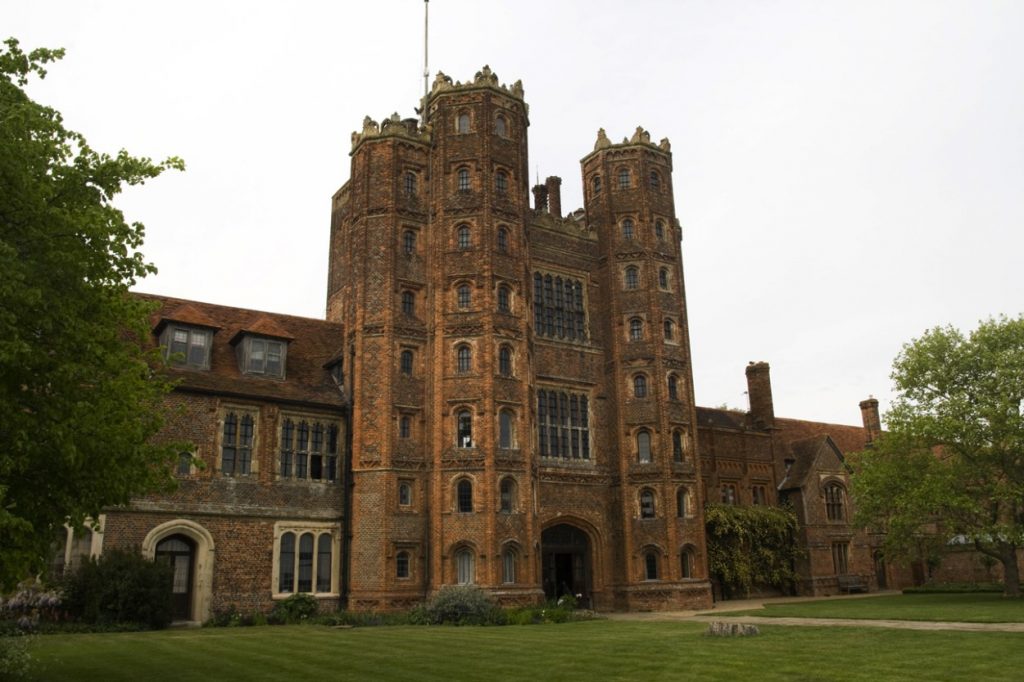This guest blog post from Ben Cowell, Director General of the Historic Houses Association, is based on his talk on Essex country houses which he gave at the Essex History Group in September 2017. You can read more from Ben on his blog.
Essex is not particularly well known for its country houses. Yet there are far more of them than you might think.
The most famous is Audley End, an English Heritage property and arguably one of the country’s most important mansions. Audley End was principally built in 1605-1614, although the property that is seen today is around a third of its former size (the courtyard wings were pulled down in the 18th century). With rooms by Robert Adam and grounds by Capability Brown, Audley End certainly meets the criteria of a house of national importance.
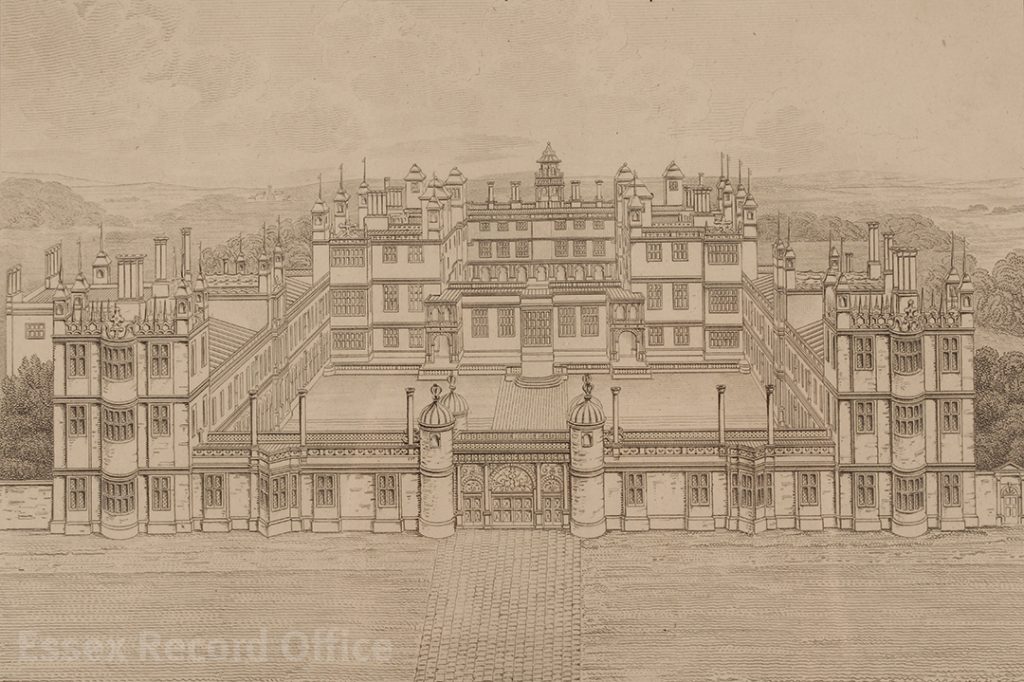
Print of the principal front of Audley End in its original state (I/Mb 381/1/55)

Audley End today – the large principal court between the remaining building and the river was demolished in the eighteenth century
But what of Essex’s other houses? The National Trust doesn’t have a single mansion property in Essex – somewhere like Paycocke’s House at Coggeshall, charming as it is, is a sizeable merchant’s house rather than a country seat. However, the presence of a fair few Historic Houses Association (HHA) member properties alerts us to the fact that there were mansions all over the county, of which many still survive.
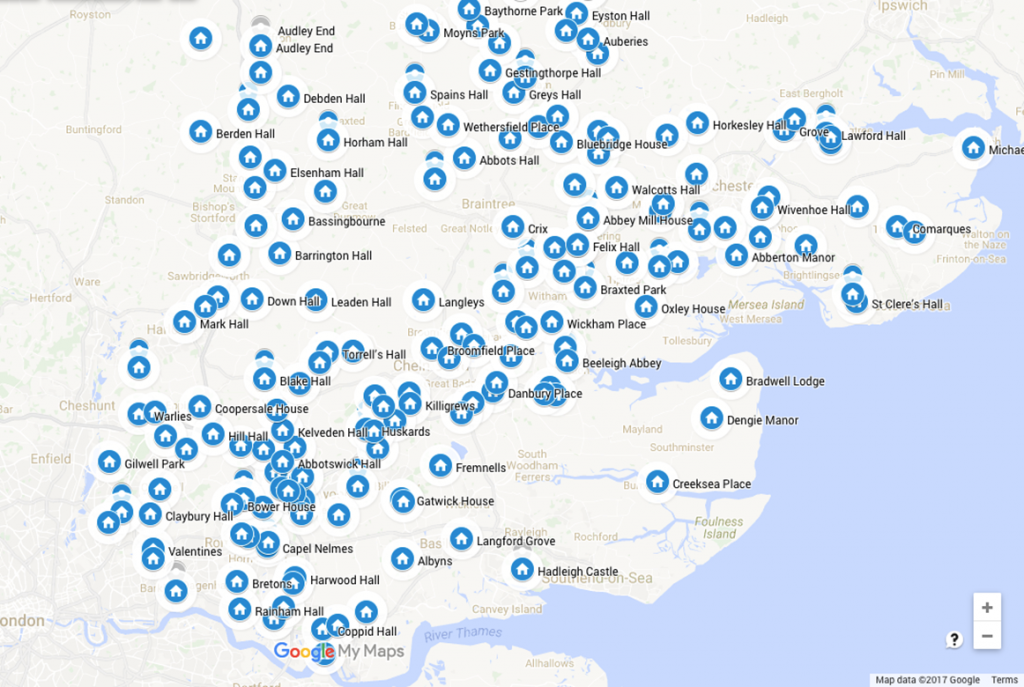
Map showing locations of country houses across Essex
HHA member houses in Essex include Layer Marney Tower, Ingatestone Hall, Hedingham Castle and Braxted Park. All of these houses are open to visits, or run for weddings and other events. Each is of genuine historical significance, and lived in by families who have an extended connection with their house stretching back many generations.

Hedingham Castle
The presence of so many HHA members in Essex is a sign of the attractiveness of the county as a place to site a country residence. Proximity to London, and to the major trading routes via the Thames, led to the decision of many landowners to construct substantial houses. Layer Marney was a remarkable gatehouse of the early 1520s, built from brick in an attempt to transpose Hampton Court to the Blackwater Estuary. Only Lord Marney’s death in 1523 put a brake on the ambitions behind the property. Henry VIII visited in August 1522, when on a royal progress that took in New Hall at Boreham too.
There were plenty of houses built in the 17th and 18th centuries. Audley End may be the most famous, but in all I found 182 houses in total, many of them built between 1600 and 1800. They included huge palaces, such as Wanstead Park, built in 1715 only to be demolished (for its building materials) 110 years later. North and south of my home village of Newport are two substantial houses from the late 17th century, Shortgrove and Quendon, although the Shortgrove of today is a modern rebuilding of the house that was lost to fire in the 1960s.
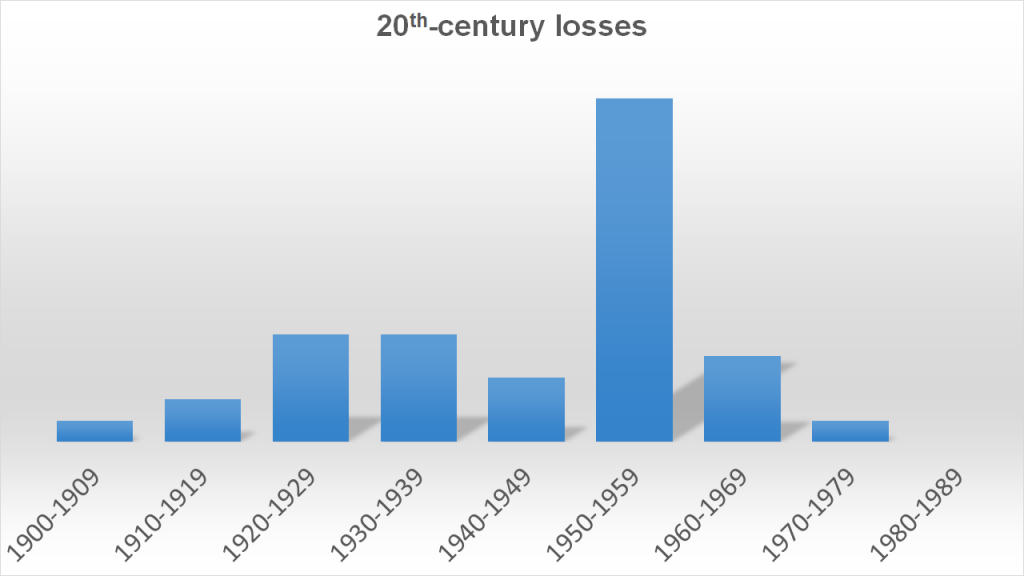
Number of country houses in Essex demolished in each century, 1900-1989
The truth was that many houses were demolished – I counted 37 in total. The peak of these losses was in the 1950s, when an astonishing number of Essex mansions were either being pulled down because families were unable to keep them going (such as at Marks Hall and Easton Lodge), or were lost beneath the suburbs of east and north-east London.
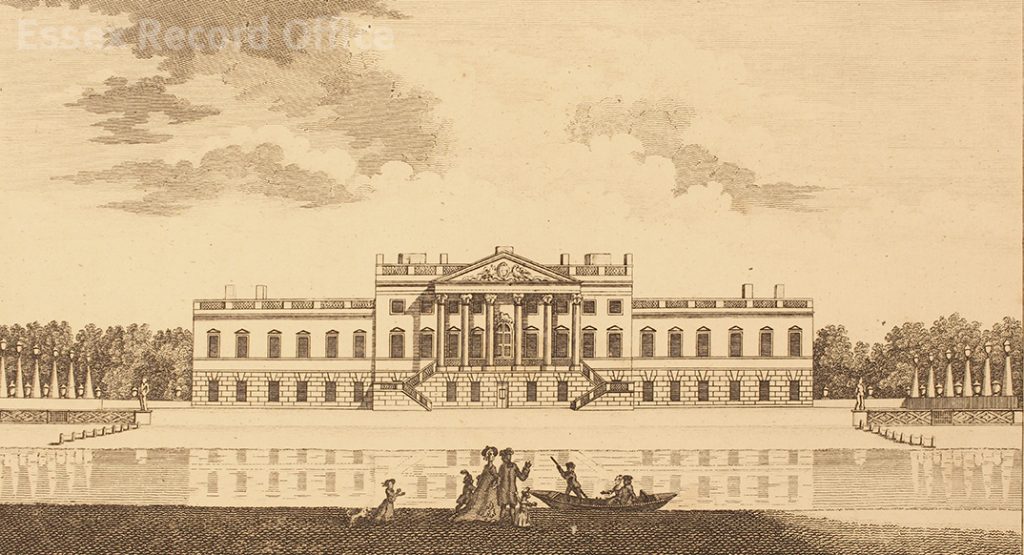
Wanstead House, one of the largest houses ever built in Essex, which stood for just 110 years (I/Mp 388/1/20)
Nevertheless, many houses survived, and continue to survive, leaving their mark on Essex’s gentle rolling landscapes. Today, Essex country houses either survive through tourism (for which see the Essex houses and gardens website), or as wedding venues. Indeed, it might be said that the Essex wedding has been the saviour of many an Essex country house.

